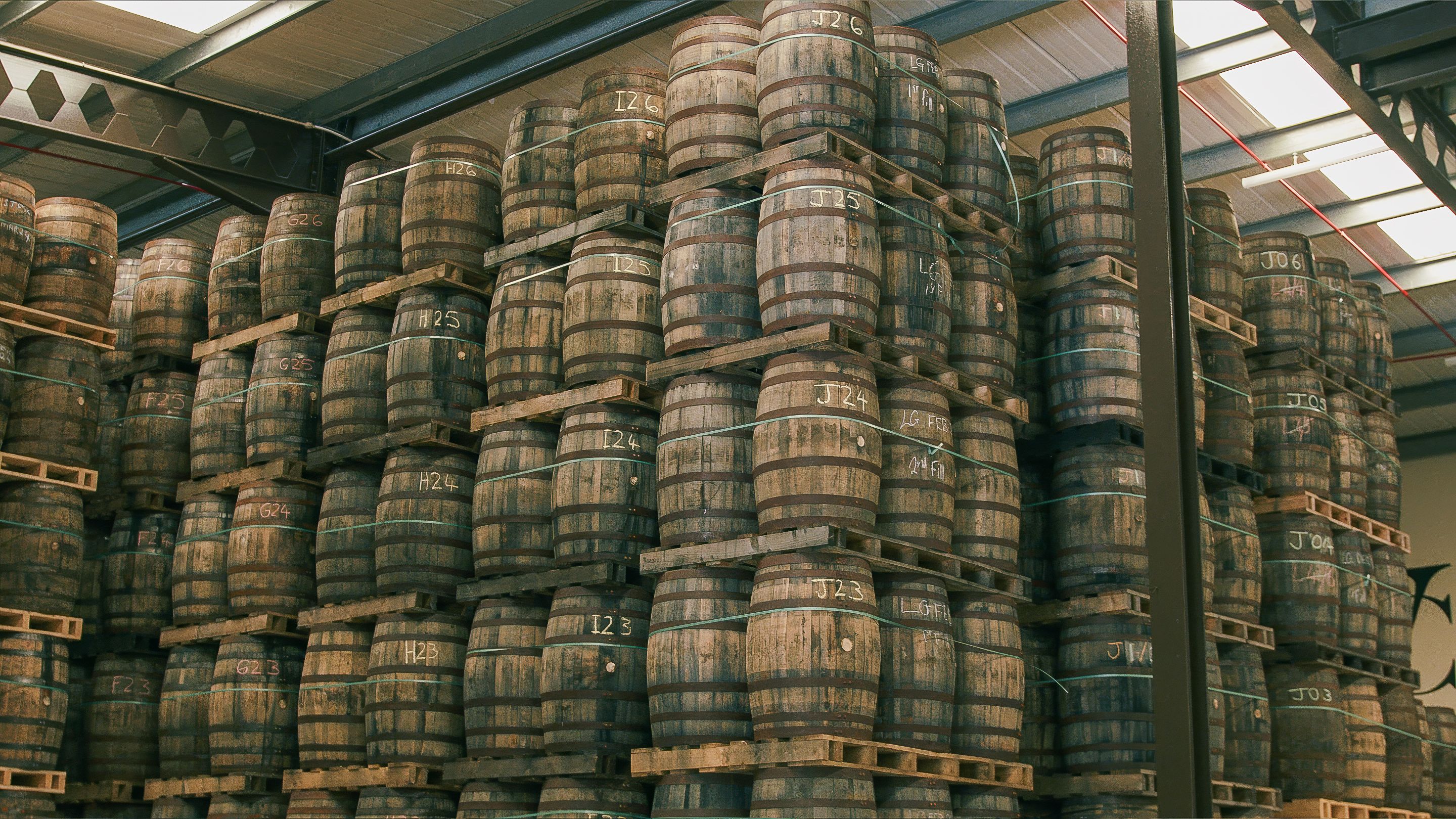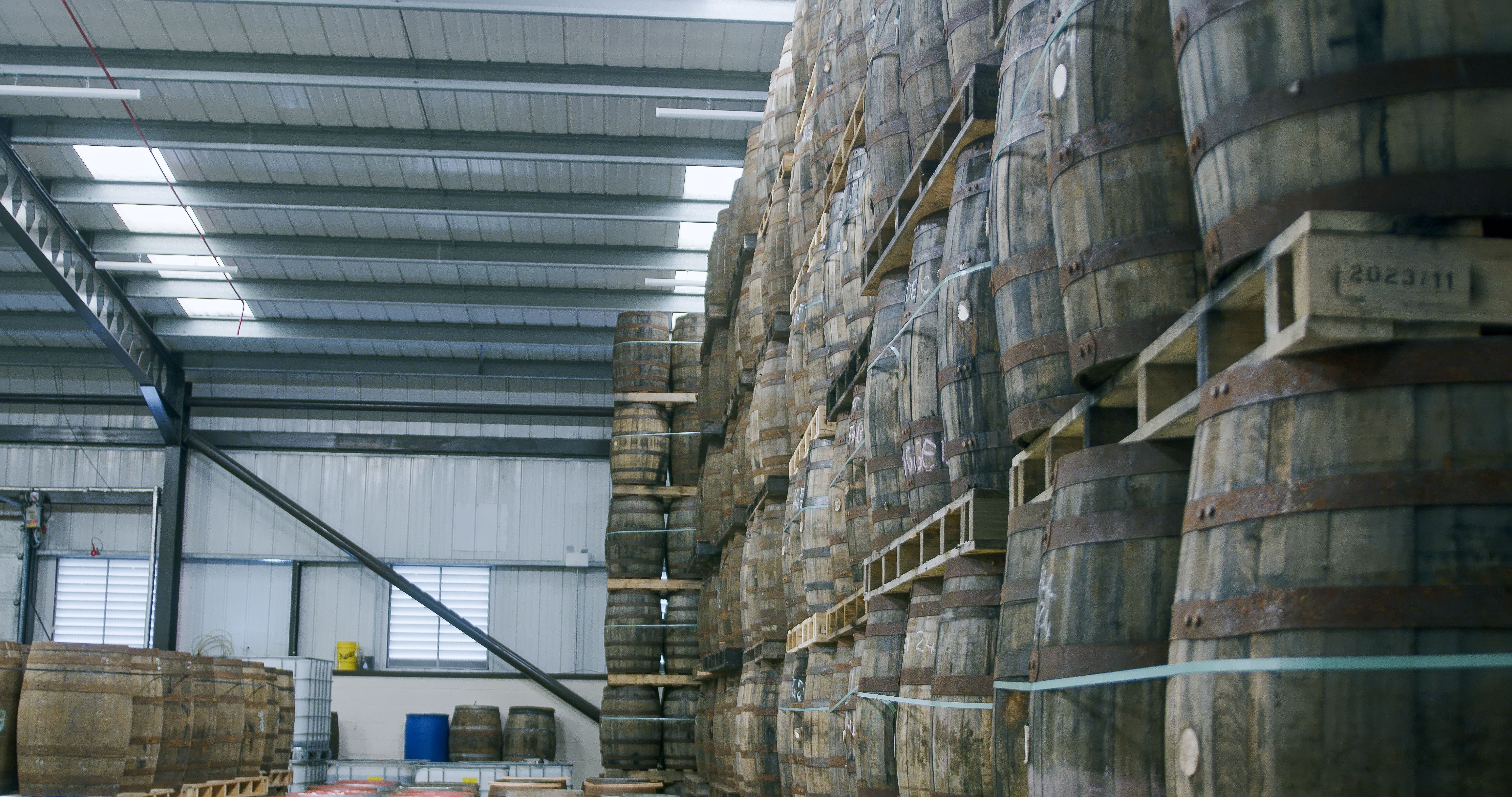
The Art of Re-Racking: How Finishing Casks Refine and Increase the value of Scotch Whisky

Victoria O'Brien
Head of Content at London Cask Traders
In the quiet, shadowy warehouses of Scotland's leading whisky distilleries, where the scent of oak and time hangs in the air, a subtle transformation often takes place - one that can define a whisky's final character and add to the profitability of a cask.
Where Tradition Meets Precision
Re-racking refers to the method of transferring whisky from its original cask into another, for 'finishing'. Tradition meets precision in this process undertaken by professional warehousemen whose job it is to do more than simply watch over casks.
Beyond simple tradition or marketing, re-racking is a skilled and deliberate part of whisky-making, deeply rooted in craftsmanship and the pursuit of flavour.
As one Glendronach warehouseman explained: 'It's not just pouring one cask into another. You need to know the cask, how active it is, what it held before, and how long it's held spirit. You're working with time, wood, and instinct.' WhiskyMag
Impact on Flavour - and Value
Re-racking can transform a whisky: adding raisiny sweetness from Pedro Ximénez (PX) sherry, dried fruit from Oloroso, or berry-rich depth from Port. This added complexity can increase a whisky's appeal - and its market price.
For example:
- A standard ex-Bourbon cask of 10-year-old Speyside whisky might sell for £3,000-£4,000.
- The same whisky re-racked into a PX sherry cask for 12 months could fetch £5,000-£6,000, depending on branding and sample quality.
Independent bottlers (like Douglas Laing Douglas Laing or Signatory Vintage Signatory Vintage) often use re-racking to create standout limited editions.
Re-Racking in Whisky Maturation:
- Re-Racking means transferring whisky still in the process of maturing from one cask to another, often a different type, size or wood.
- Finishing Casks (such as ex-Sherry or ex-Port) are generally used to develop new layers of flavour.
- Independent Bottlers often use the process of re-racking to refine and add their own twist to whisky from certain distilleries
- Professional Warehousemen use experience, nose and judgement to determine the right timings for re-racking.
- Detailed Records are kept on cask movement and re-racks; this date then appears on Delivery Orders and in auction catalogues
- Costs, including Re-Gauging (re-measuring ABV and total volume), can be offset by the added market value of a re-racked finished cask.
- Bearing all the above in mind, it's clear re-racking is both an art and a commercial decision, balancing tradition, flavour and added financial value.

Skills Behind the Scenes
Experienced warehousemen judge re-rack readiness with their nose and knowledge. While ABV and cask fill levels are routinely recorded, much of the final judgement when it comes to re-racking is tactile - lifting a bung, pulling a sample, swirling it in a glass.
Reasons for Re-Racking
-
Flavour Enhancement: transferring whisky (typically from ex-Bourbon barrels) into a second 'finishing cask' (most often ex-sherry, port or wine), alters its flavour profile, adding residual notes from the casks' previous contents, which soak into the whisky during this final stage of maturation.
-
Maturation Management: re-racking can be used by professional warehousemen to either slow down or accelerate the maturation process, depending on the profile of the whisky and personality of the final product they are hoping to achieve.
-
Documentation: Re-racking is always logged in warehouse records and appears on Delivery Orders, providing buyers and sellers alike a clear indication of the condition of the cask, including proof that any potential damage or leaks have been expertly managed.
-
Increased Value: A well-finished whisky, with specific details logged on a Delivery Order, or auction catalogue, can command a higher price and boost profits for private cask owners.
Note: timing is crucial. Too long, and the secondary wood can dominate, masking the whisky's original character; too short and the finish may not fully develop.
The Re-Racking Pioneers
While historic reasons for re-racking might be a damaged or leaky cask, the focus in today's market is more likely to be 'cask finishing' - a practice that only gained prominence in the late 20th century.
In the 1990s, Glenmorangie's Dr. Bill Lumsden helped popularise cask finishing, with whiskies finished in ex-Port and ex-Sherry casks becoming iconic. Many others soon followed.
Today, distilleries like Benriach, Glendronach, and Auchentoshan all use re-racking extensively, especially into Oloroso Sherry, PX, or Ruby Port casks - prized for the rich, fruity, nutty flavours they impart.

Tradition with Purpose
Re-racking stems from both tradition and timing, but it's more than just a trend or affectation. It's a deeply considered, skill-led practice with a real impact on the final flavour and character of a whisky, and financial worth.
In Scotland, where climate and wood play such vital roles, re-racking is an art that has been developed over generations.
Warehousemen often describe it as a kind of 'quiet conversation between the cask and the whisky.'
Done well, re-racking is the difference between a good whisky and a remarkable one.
Any intelligent cask investor understands the significance of re-racking and knows that behind every 'Sherry finish' label there's a team of craftspeople - listening to the cask, timing it just right, helping the whisky reach its full potential, and maximising profits.

Victoria O'Brien
Head of Content at London Cask Traders
